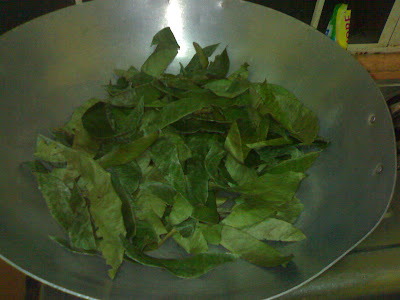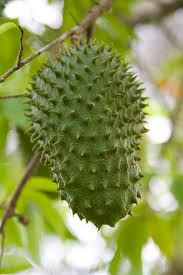This is what I would tell anyone who would be amazed at my growing lots of Guyabano seedlings.
Yes! Since I can't tell people to watch their diet so as to avoid cancer, I give them plants so they would already have the fruit in time for their cancel cells' invasion of their body. They could also share and be of great help to neighbors.
According to America’s largest drug manufacturers, the fruit of over 20 laboratory tests conducted since the 1970’s, extracts from the tree were shown to effectively target and kill malignant cells in all 12 types of cancer, including colon, breast, prostate, lung and pancreatic cancer. The tree compounds proved to be up to 10,000 times stronger in slowing the growth of cancer cells than Adriamycin, a commonly used chemotherapeutic drug! Amazingly, unlike chemotherapy, the compound extracted from the Guyabano tree selectively hunts down and kills ONLY CANCER CELLS and does not harm healthy cells!
But aside from this, there are still many vitamins and nutrient that can be found in Soursop. These are;
1. Vitamin C 77% DV Prevents UTI
Soursop is an excellent source of vitamin C, a nutrient which increases the acidity level of urine, resulting in decreased number of harmful bacteria that may be present in the urinary tract.
2. Fiber 30% DV Prevents constipation
Before you reach for laxatives to treat your constipation, you might first want to try eating fiber-rich fruits like soursop. Fiber also aids in weight loss and lowers the risk of colon problems.
3. Potassium 18% DV Prevents leg cramps
Lack of potassium, together with magnesium, calcium and sodium (also known as electrolytes) in the body can cause muscle weakness and cramping. Guyabano has the potassium half that in bananas.
4. Magnesium 12% DV Prevents water retention
Women who experience water retention before their monthly period would benefit from the soursop’s rich magnesium content. It may help alleviate this annoying premenstrual symptom
5. Thiamin 11% DV Helps the body produce energy
Guyabano can supply the body a good amount of thiamin, the B vitamin which is needed in aerobic energy production, the process when oxygen is used to help convert sugar into usable energy.
6. Copper 10% DV Keeps bones healthy
It is loaded with the trace mineral copper. Calcium contributes only about 25% to the prevention of bone loss as magnesium, manganese, zinc and copper are also equally crucial for healthy bones. Zinc and copper boost the effectiveness of vitamin D, which promotes the absorption of calcium.
7. Niacin 10% Boosts good cholesterol levels
Soursop is a good source of niacin, a vitamin which studies show has significant benefits on levels of HDL, the good cholesterol
8. Folate 8% DV Prevents pregnancy complications
This spiky fruit contains folate. Studies have proven that folate intake during pregnancy prevents deficiency in pregnant women. A lack of this mineral during pregnancy may contribute to birth defects and pregnancy loss.
9. Iron 8% DV Helps prevent anemia
It can provide iron which prevents the common blood disorder anemia , a condition in which the blood lacks enough healthy red blood cells. RBC is responsible for the distribution of oxygen to the body tissues, giving the body energy.
10. Riboflavin-7% DV Helps prevents migraine
Headache? Try soursop! It has riboflavin. Several studies have shown that high riboflavin intake helps prevent migraines.













